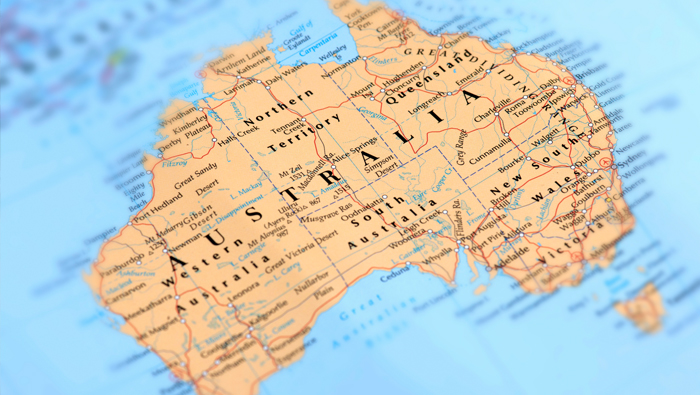December 2020
- Download the complete Bulletin December 2020 3.94MB

The Term Funding Facility
The Reserve Bank's Term Funding Facility (TFF) was announced in March as part of a monetary policy package to reduce funding costs across the economy and to support lending, especially to small and medium-sized businesses. Most of the initial allocations of the TFF were drawn upon by the time the first phase of the facility closed in September. In September, the Reserve Bank Board adjusted the TFF in response to economic conditions, expanding and extending the facility and in November it lowered the interest rate on new drawings. Drawdowns from the TFF have increased the Reserve Bank's balance sheet significantly and the facility has contributed to an easing in financial conditions. As a result of the Reserve Bank's policy measures, including the TFF, bank funding costs and lending rates are at historically low levels.

A Counterfeit Story: Operation Gridline
In 2019, the counterfeiters responsible for the production of a group of high quality $50 and $100 counterfeit banknotes were sentenced. From first detection at the Reserve Bank's Counterfeit Examination Laboratory, through police investigation, arrest and finally prosecution and sentencing, this counterfeit episode was resolved reasonably quickly. This experience highlighted the benefits of collaboration between the Bank, federal and state police and legal authorities, and how such a collective effort can be very effective in the disruption of counterfeit production and distribution in Australia.

Governance of Financial Market Infrastructures
Good governance is critical to delivering effective risk management outcomes. Several high-profile reports have underscored this point in recent years, finding governance issues to be at the heart of poor compliance and risk management outcomes in the financial industry. Given the key role that financial market infrastructures (FMIs) play in supporting efficient and stable markets, the RBA has a strong interest in promoting good governance within these entities. This article explores aspects of FMI governance and how governance arrangements can help promote the safe and effective delivery of FMI services.

Secondary Market Liquidity in Bonds and Asset-backed Securities
Liquidity is an important measure of health and stability in financial markets. This article assesses liquidity in markets that trade Australian fixed income securities by analysing market turnover using data for the period 2015–17, which was one of relative calm. We find heterogeneity across these markets. Australian and State Government bonds have higher turnover than other securities. Turnover was generally higher for larger bond lines, but not universally so. In particular, there is relatively high turnover in a number of small asset-backed security lines.

The COVID-19 Outbreak and Australia's Education and Tourism Exports
International travel restrictions to contain the spread of COVID-19 and precautionary behaviour on the part of travellers have significantly disrupted the movement of people globally. Education and tourism were Australia's fourth and fifth largest exports prior to the pandemic, and exports of these services have fallen sharply. This article documents the effects of the virus on Australia's education and tourism exports and draws on information from the Reserve Bank's regional and industry liaison program to discuss the uncertainties around the medium-term outlook once international travel resumes.

Long-term Unemployment in Australia
Are your future employment prospects affected by past periods of unemployment? And does it matter how long you were unemployed? The average duration of unemployment has increased steadily over the 2010s. At the same time, the rate at which unemployed people are able to find a job has slowed. Long-term unemployed people are more likely to be older and male and have lower levels of formal education than those who have been unemployed for a shorter period. We use micro-level labour market data to show that future employment prospects are closely tied to the duration of unemployment: people who are unemployed for longer are less likely to find a job. We also find some evidence that an extended period of unemployment can harm people's employment chances for a long time afterwards.

The Response by Central Banks in Advanced Economies to COVID-19
Central banks in advanced economies have employed a wide range of tools to support their economies and financial systems during the COVID-19 pandemic. Some measures have involved scaling up standard central bank tools or reactivating facilities introduced during the global financial crisis. Other measures are new innovations. The speed at which these tools were deployed and scale of their usage has been unprecedented. These measures have helped to restore functioning of financial markets, lower interest rates, and support the flow of credit to borrowers.

Economic Developments in India
Over recent decades, India's rapid economic growth has led to a substantial increase in its demand for Australian exports. However, India is currently facing the most significant setback to its economic development in decades as a result of COVID-19. Like in many other economies, the pandemic has severely affected near-term economic activity and exacerbated existing vulnerabilities in the Indian economy. While it will take some time for the Indian economy to recover, underlying fundamentals should support growth in the long term. This in turn should increase demand for some key Australian exports such as coking coal and education services, and so India will likely remain an important trading partner for Australia. The outlook for other resource exports such as iron ore and thermal coal is less positive because India is expected to be self-sufficient in these commodities.

Shadow Financing in China
In 2016, Chinese authorities launched a campaign to reduce risks in China's shadow finance system. The campaign managed to reduce the size of China's shadow finance system, which has declined from over 60 per cent of GDP to around 40 per cent. This has been a positive development from a systemic risk perspective. Regulatory reform has improved the visibility authorities have over the financial system and improved their ability to target policies to address emerging risks. However, savers now have fewer investment options that offer attractive returns, while financial intermediaries have faced increased pressures on both the assets and liabilities sides of their balance sheets. In addition, the supply of credit has been curtailed in sectors that rely on shadow finance. The COVID-19 pandemic has further highlighted the difficult trade-off policymakers face between containing longer-term financial system risks while supporting economic growth in the near term.
September 2020
- Download the complete Bulletin September 2020 7.5MB

Managing the Risks of Holding Self-securitisations as Collateral
Self-securitisations are structured pools of assets, such as residential mortgages, created by banks specifically to use as collateral to access liquidity from the Reserve Bank. The ability of banks to transform illiquid mortgages into liquid assets improves overall liquidity in the financial system. Some financial risks the Reserve Bank faces by holding self-securitisations as collateral differ from other collateral assets (such as government and corporate securities). Unlike these assets, self-securitisations are not currently traded on any public market, and the risks of the self-securitisation are related to the risks of the bank using it as collateral. The Reserve Bank applies a series of additional controls to self-securitisations accepted as collateral to protect against potential financial losses.

Government Bond Market Functioning and COVID-19
The market for Australian Government Securities is a critical fixed income market in Australia, including because it serves as a pricing benchmark for many other interest rates in the economy. The extreme economic and financial uncertainty caused by the onset of the COVID-19 pandemic led to this market becoming dysfunctional, with investors unable to transact in reasonable size. In response to the pandemic, on 19 March 2020 the Reserve Bank announced a number of new policy measures, which, among other things, have been successful in restoring the functioning of government bond markets. This article discusses various measures of market functioning, their deterioration, and subsequent improvement.

The Economic Effects of Low Interest Rates and Unconventional Monetary Policy
The cash rate is currently at its effective lower bound and the Reserve Bank has put in place a suite of alternative monetary policy tools. This article uses the Bank’s macroeconometric model of the Australian economy, MARTIN, to analyse the implications of a constrained cash rate and illustrate how unconventional monetary policies can support the Australian economy. By lowering interest rates that are typically affected indirectly through changes in the cash rate, unconventional policies can stimulate economic activity through many of the same channels as conventional monetary policy.

Retail Central Bank Digital Currency: Design Considerations, Rationales and Implications
There has recently been increasing international focus on the possible issuance of central bank digital currencies (CBDC), or what might be considered a digital equivalent of banknotes. While the technical feasibility of such a new form of money is not yet established, this paper considers some issues around its possible design, the possible rationales for issuance, and the implications of issuance. Given the likely benefits and risks, at present there does not seem to be a strong public policy case for issuance in Australia. Nonetheless, it will be important to closely watch the experience of other jurisdictions that are considering implementing CBDC projects.

Insights from the New Economic and Financial Statistics Collection
The Reserve Bank has worked with the Australian Bureau of Statistics (ABS) and the Australian Prudential Regulation Authority (APRA) to modernise and expand data collected from Australia’s financial sector. This article discusses some of the insights from the data, known as the Economic and Financial Statistics (EFS). The EFS collection has been used to monitor developments in the provision of finance to the Australian economy since the onset of the COVID-19 pandemic. For instance, new data on housing interest rates shows that there has been a decline in these rates alongside the package of measures implemented by the Reserve Bank in March this year.

The COVID-19 Outbreak and Access to Small Business Finance
The COVID-19 pandemic has adversely affected the business sector. Overall, small businesses have been disproportionately affected because they are more likely to be in industries that have been harder hit by the pandemic. Demand for new loans appears to be weak, probably because businesses are reluctant to take on debt given heightened uncertainty about the economic outlook. The various short-term initiatives to support businesses’ cash flows are also likely to have dampened the immediate demand for credit. At the same time, access to finance continues to be a challenge for small businesses. Banks have tightened their lending practices in recent years and are more cautious about lending to businesses that have been significantly affected by the pandemic.

Modernising Payments Messaging: The ISO 20022 Standard
Electronic payments rely on the exchange of messages to instruct the flow of funds between financial institutions. The quality of payment messaging data is important as it determines what payment information is received by financial institutions and their customers. Worldwide, there is movement to develop new payment systems using the International Organization for Standardization (ISO) 20022 messaging standard, and to migrate some existing systems to the standard. In Australia, an industry-led project to migrate the High Value Payments System to ISO 20022 commenced this year. This will provide a number of benefits, including improved transfer of payment information to beneficiaries, better fraud and financial crime management for payments service providers and greater opportunities for straight-through processing.

The Rental Market and COVID-19
The COVID-19 pandemic is an unprecedented shock to the rental housing market, reducing demand for rental properties at the same time as supply has increased. Households most affected by the economic impact are more likely to be renters, and border closures have reduced international arrivals. The number of vacant rental properties has increased as new dwellings have been completed and some landlords have offered short-term rentals on the long-term market, particularly in inner Sydney and Melbourne. Government policies have supported renters and landlords. Rents have declined, partly because of discounts on existing rental agreements and it is likely that rent growth in many areas will remain subdued over coming years.

Labour Market Persistence from Recessions
The COVID-19 pandemic has led to a rapid deterioration in labour market outcomes, some of which may be long-lasting. This article examines the long-lived effects of previous downturns on unemployment in Australia, including by assessing how regional labour market outcomes varied during and after the GFC and early 1990s recession. We find that recessions have enduring effects on unemployment rates: regions that experienced larger-than-average downturns had significantly higher unemployment rates for around a decade afterwards.

Private Sector Financial Conditions in China
Historically it has been challenging to assess financial conditions for private firms in China. This article assembles a range of indicators that shows private firms find it more difficult and expensive to access financing than state-owned firms. Based on these indicators, the private sector had experienced a tightening in financial conditions over the past few years, although more recently conditions have generally eased as a result of new measures that direct more credit to private firms.

The Global Financial Safety Net and Australia
The Global Financial Safety Net (GFSN) allows for financial assistance to be provided to economies in the event of an economic or financial crisis. Together with the substantial monetary and fiscal policy response globally, the GFSN has played a key role in helping economies respond to the COVID-19 pandemic. The GFSN has a number of elements, including the assistance provided by the International Monetary Fund, regional financing arrangements and some bilateral swap lines established by central banks. This article provides an overview of the GFSN, how it has evolved and been used over recent months, and the role the Reserve Bank of Australia plays in it. Use of the GFSN could increase materially over the period ahead if economic and financial market conditions around the world deteriorate.

Different Approaches to Implementing a Countercyclical Capital Buffer
The countercyclical capital buffer (CCyB) was one of the measures designed to improve the resilience of the global banking system following the global financial crisis (GFC). It is a bank capital buffer that can be raised or lowered by jurisdictions depending on the level of risk in the financial system. This article describes different approaches to implementing the CCyB. Most jurisdictions set the ‘default’ CCyB rate at zero until risks are elevated; however, recently, several have adopted frameworks where the CCyB is positive through most of the financial cycle. The Australian Prudential Regulation Authority (APRA) has recently announced that it is also considering moving to a non-zero (positive) default CCyB (APRA 2019). This article discusses the possible benefits of a positive default CCyB.
June 2020
- Download the complete Bulletin June 2020 5.3MB

Transactional Banking at the RBA in Extraordinary Times
The Reserve Bank of Australia (RBA) is the banker to the Commonwealth of Australia, supporting the Australian Government in its daily banking needs. During extraordinary times, such as the bushfires of the 2019/20 summer season or the current COVID-19 pandemic, demands on banking services are heightened as additional payments are made to Australians who require funds immediately. By modernising its products and service offerings and the underlying technology, the RBA has ensured payment and banking systems are fit to perform these tasks securely and reliably. In the past, additional payments during extraordinary times required additional effort and at times unconventional means. Today, government payments can be made seamlessly, even during crisis situations, ensuring funds are received without unnecessary delays.

Economic Effects of the Spanish Flu
The Spanish flu reached Australia in 1919 and remains the country’s most severe pandemic in terms of health outcomes. At the peak of the pandemic, sickness due to influenza temporarily incapacitated 2 per cent of the labour force. However, despite the social distancing measures used by governments to contain the virus, few job losses in this period were due to a lack of available work. The labour market also recovered quickly, but it is not clear how relevant this experience is for the modern economy.

News Sentiment and the Economy
The large and immediate effect of the COVID-19 pandemic on economic activity has increased the need for more real-time indicators of the economy. This article discusses a new indicator of `news sentiment’, which uses a combination of text analysis, machine learning and newspaper articles. The news sentiment index complements other timely economic indicators and has the advantage of potentially being updated on a daily basis. The news sentiment index captures key macroeconomic events, such as economic downturns, and typically moves ahead of survey-based measures of sentiment. Related indicators, such as the news uncertainty index, similarly help to better understand real-time developments in the Australian economy.

Why Study (or Not Study) Economics? A Survey of High School Students
There has been a stark decline in the size and diversity of the Year 12 Economics student population since the early 1990s. The Reserve Bank has commissioned a comprehensive survey of students to gain quantitative evidence of the factors contributing to this decline. The survey responses highlight that while economics in general is perceived to be important for society, many students lack an interest in, or understanding of, Economics as a subject. This finding is even more pronounced for students who are female, those from a lower socio-economic background and those from regional schools.

Bank Fees in Australia
The Reserve Bank’s 23rd annual bank fees survey shows that, overall, banks’ income from fees declined in 2019. Fee income from households decreased, largely driven by lower fees from deposit accounts. A number of reforms related to merchant services contributed to banks’ fee income from businesses growing at a slower pace than in recent years.

Cash Use in Australia: Results from the 2019 Consumer Payments Survey
The Bank’s 2019 Consumer Payments Survey (CPS) suggests that the use of cash for transactions has continued to fall alongside growing use of electronic payment methods. Despite this, a substantial share of consumers still use cash intensively, with this share having reduced only a little over recent years. These high cash users are more likely to be older, have lower household income, live in regional areas, and/or have limited internet access. The survey suggests that around one-quarter of consumers would face major inconvenience or genuine hardship if they could no longer use cash, although most respondents stated that their current access to cash was convenient. The survey was conducted before the emergence of COVID-19 and the associated social distancing measures, however, and so did not capture any change in behaviour that may have resulted from this.

Quality Change and Inflation Measurement
Households’ perceptions of inflation can differ from inflation as measured by the Consumer Price Index (CPI). One factor that may contribute to this difference is that the CPI seeks to take into account changes in the quality of many items that households buy. Around 2–3 per cent of the CPI basket is adjusted for quality change each quarter, with the prices of consumer durables most affected. While a range of methods have been developed to help statisticians identify and quantify quality change, it remains a challenging area of price measurement.

Household Wealth prior to COVID-19: Evidence from the 2018 HILDA Survey
This article examines the distribution of wealth in Australia prior to the COVID-19 pandemic and considers the implications for the financial resilience of households during the associated economic downturn. In terms of their wealth, most Australian households appear well placed to withstand a temporary fall in income. However, younger households and those working in industries most affected by activity restrictions are likely to be more vulnerable to income loss; only around half of these households could cover three months of expenses out of their liquid assets. Highly indebted households that experience shocks to their income and have limited liquid assets will also find this period particularly challenging. Policies to support household income, as well as those aimed at rescheduling debt repayments, should cushion these effects. The resilience of households will also depend on the timing and sustainability of the economic recovery.

China's Residential Property Sector
The property sector is a significant driver of economic growth in China and a key source of demand for Australian commodity exports. Authorities have become increasingly wary of financial risks in the sector, and moved to reduce the importance of policies directed at real estate for managing short-run fluctuations in aggregate demand. The effect of COVID-19 on property sales and developer balance sheets necessitated a moderate easing of policy to support the real estate sector, but it only appears to have delayed rather than halted efforts to de-risk the sector.
March 2020
- Download the complete Bulletin March 2020 5.1MB

Two Years of Fast Payments in Australia
It has been two years since the public launch of the New Payments Platform (NPP) and the Fast Settlement Service (FSS). Together, the NPP and FSS now enable customers of more than 90 financial institutions to make fast payments 24 hours a day, every day of the week (‘24/7’). Customers can send detailed information with a payment and nominate the payment recipient in a simple way. While the rollout of the NPP has been gradual, usage grew rapidly over the second half of 2019 and compares favourably with other successful fast payment systems introduced overseas. With a range of new functionality under development, the NPP and FSS are well placed to deliver innovative new payment services to support the Australian economy into the future.

Consumer Payment Behaviour in Australia
The Reserve Bank’s 2019 Consumer Payments Survey has provided further evidence that Australian consumers are increasingly preferring to use electronic payment methods. Many people now tap their cards, or sometimes phones, for small purchases rather than paying in cash. Consumers also have an increasing range of options available for making everyday payments. Despite this, cash still accounts for a significant share of lower-value payments and a material proportion of the population continues to make many of their payments in cash.

The Cost of Card Payments for Merchants
Data on merchants’ costs of accepting card payments show large differences in payment costs across both merchants and card systems. Smaller businesses typically face higher payment costs than larger businesses, credit card transactions are generally more expensive that debit cards, and debit card transactions tend to be more costly for most merchants when processed through the international card schemes compared with the domestic debit scheme. Overall costs of accepting card payments have nevertheless declined over the past decade, following the implementation of various reforms by the Bank.

Developments in Banks' Funding Costs and Lending Rates
Banks’ funding costs declined over 2019, driven by reductions in the cash rate. Lenders passed most of the decrease in funding costs through to interest rates on mortgages and business loans. Funding costs and lending rates are at historical lows.

Renewable Energy Investment in Australia
Renewable energy investment has increased significantly in Australia over recent years, contributing to a continuing shift in the energy generation mix away from traditional fossil fuel sources. Current estimates suggest that investment in renewable energy has moderated from its recent peak and is likely to decline further over the next year or two. In the longer term, the transition towards renewable energy is expected to continue. Significant coal-fired generation capacity will be retired over coming decades and is likely to be replaced mainly by distributed energy resources and large-scale renewable energy generators, supported by energy storage.

The Road to Australian Dollar Funding
A key feature of Australia’s financial system is that nearly all liabilities are denominated in, or hedged into, Australian dollars. A pre-condition for this state of affairs is that investors are willing to hold Australian dollar-denominated assets. Investor confidence in Australian dollar assets is supported by Australia’s sound institutional framework, history of positive macroeconomic outcomes, and well-functioning financial system. Australia’s journey to funding in its own currency spanned nearly a century and involved various costs. Today, these funding arrangements confer substantial benefits to the Australian economy, including by reinforcing the same positive economic, financial and institutional outcomes that made Australian dollar funding possible in the first place.

Regional Variation in Economic Conditions
Differences in economic conditions between capital cities and regional areas have widened since the early 2000s. Some regional areas, particularly outer regional and remote areas, have faced considerable structural changes and have taken longer than other regions to adapt to these developments. Most regional labour markets appear to have adjusted quite well to the differences in regional economic conditions, though the adjustment process may have been more difficult for some regions.

Demographic Trends, Household Finances and Spending
The share of the population in their peak earning and spending years (ages 35–54) has decreased over the past decade, while the share aged 65 and above has increased. Demographic change has tended to reduce aggregate growth in household income and consumption, but by less than what previous patterns of household spending would suggest. This is because older households have earned and consumed more than in the past, and they have become wealthier. By contrast, growth in spending by younger households has been subdued, consistent with their weak income growth. The different earning and spending behaviour of households across different age groups will continue to affect trends in aggregate household consumption and income as the population ages further.
The graphs in the Bulletin were generated using Mathematica.
ISSN 1837-7211 (Online)

